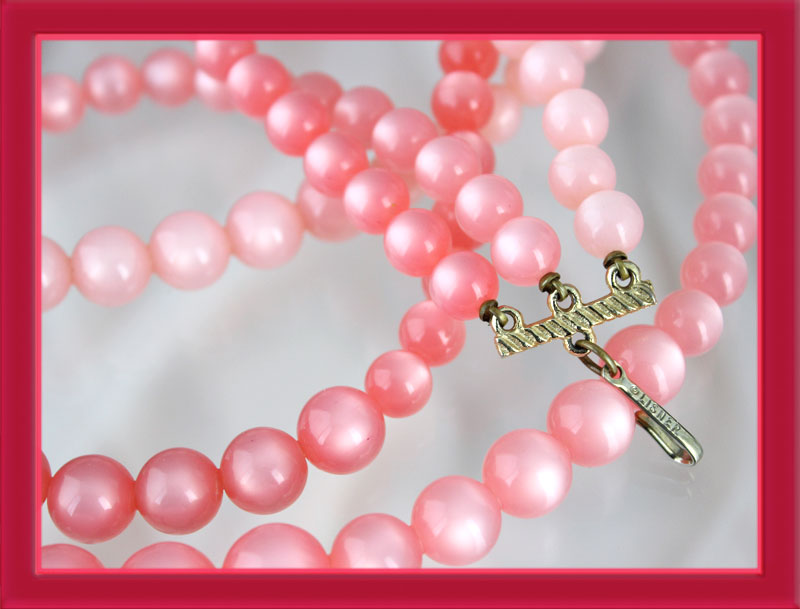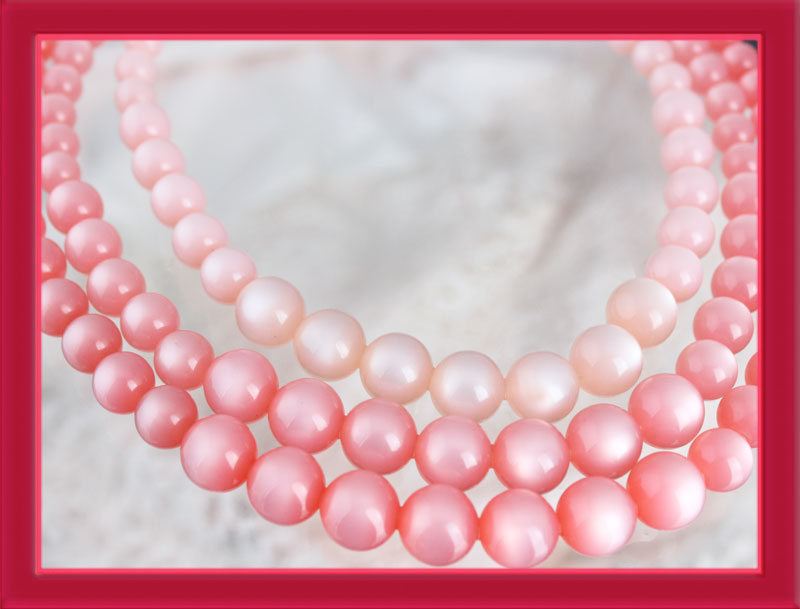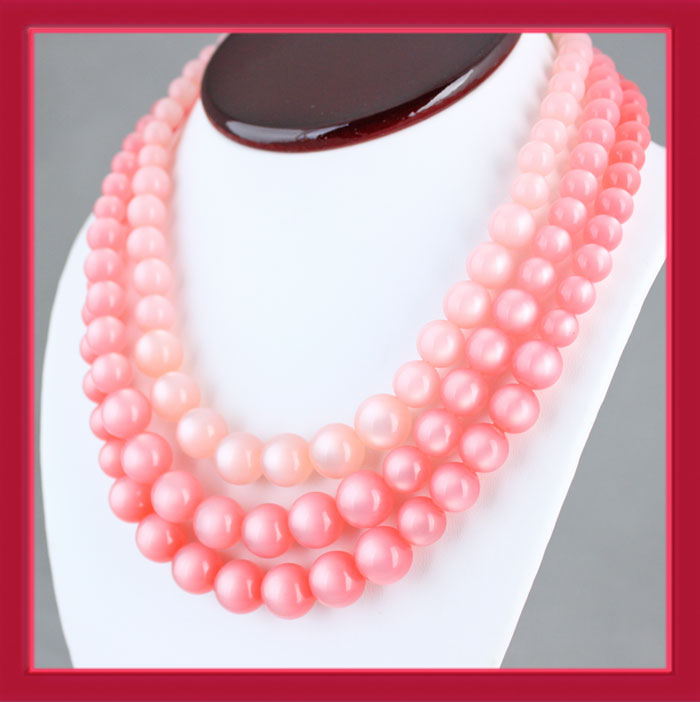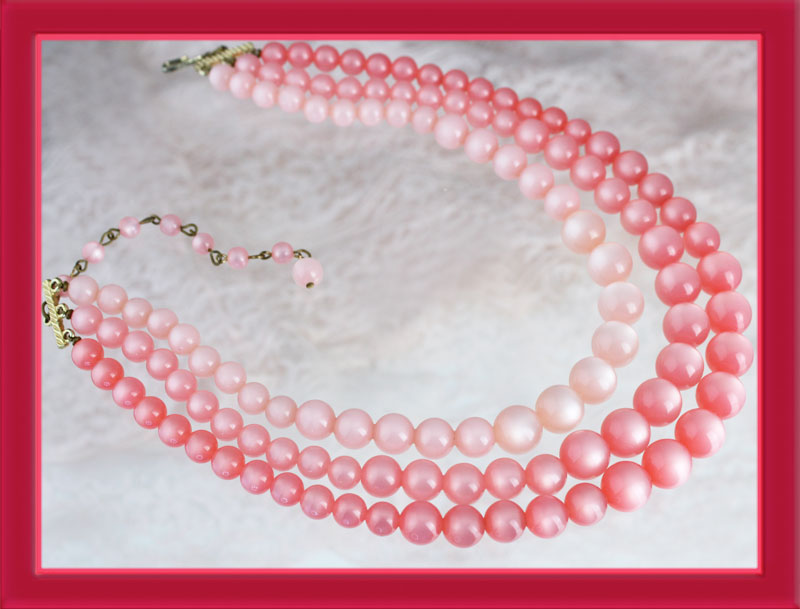Return To Previous Page
Lisner | Pink Moonglow Triple Strand Beaded Necklace
Lisner | Pink Moonglow Triple Strand Beaded Necklace
. . . . So Feminine!
Lisner
Lovely pink moonglow necklace featuring triple hand-strung graduated beads. So many times a triple strand necklace can weigh heavy on the neck, but this lovely necklace is very light weight. The beads at first seem to be soft pale pink but they can actually take on a peach color. I would think that they could have a pink to peach color depending on your clothing color choice. ID-713
Measurements:
Necklace measures 16 ⅝ longest length and largest bead diameter is approximately ½".
Lisner Jewelry History —
David Lisner was born in Germany in 1846. In 1864, Lisner and his family immigrated to New York. His father Selig and brothers George and Abraham were merchants. David Lisner founded his company D. Lisner & Co. in 1904. In the early twentieth century, David Lisner's son Sidney and a cousin Saul (Solomon) Ganz joined the company.
Lisner wholesaled imported products from Europe such as jewelry, hat pins, crystalware and clocks. As the impending World War II approached, the import of jewelry and rhinestones from Europe was very difficult. The majority of Lisner's jewelry was produced during the 1950's and 1960's. The Lisner Company manufactured a broad range of jewelry from high quality, in the 1950's, using more expensive and superior aurora borealis stones and rhinestone, to medium priced and the lower priced range similar to Coro jewelry. The Lisner Company was known for their beautiful plastic insert jewelry, circa abt. 1960.
Lisner like many other jewelry designers of his time favored abstract and geometric jewelry designs. The majority of the designs were influenced by nature and featured leaves, fruits, and flowers. Some of Lisner's hallmark selected sets are multi-colored sets, for example, the large leaf sets called "Spring Frost" were created in different shades of gray, while the red oak leaf sets were made in a variety of colors; the Lisner floral sets are also rare.
Lisner was also the official distributor of French designer's Schiaparelli jewelry in the United States and also had a license for the production of Schiaparelli's jewelry and accessories in America. David Lisner died on May 6, 1923 at the age of seventy-seven.
During the 1930's, Urie Mandle, entered into a partnership with Lisner. Mandle's main responsibility was to build a retail company that will retail product in the United States. The new company was located in Providence, Rhode Island. Lisner did not own its own factories for the production of their product but had them manufactured by various companies. Whiting & Davis was one of those companies. Also during the 1930s, Lisner continued to diversify, expanding into other areas of the fashion industry, including purchasing the Prince Matchabelli perfume line.
Victor Wendell Ganz the son of Saul Ganz was president of Lisner. After Sidney Welicky retired, Ganz and Iraida Garey, vice president of product development took over the designing responsibilities. Victor Ganz is best known, not as the head of the D. Lisner Company, but as a major art collector. He and his wife Sally amassed one of the largest and finest collections of artwork by Pablo Picasso. Ganz owned one of Picasso's best-known and greatest masterpieces - "The Dream."
In the 1970's, Lisner purchased the Richelieu Pearl Company, and changed the name to "Lisner-Richelieu". Their Richelieu line of jewelry contained more expensive materials such as aurora borealis and Lucite cabochons along with Austrian rhinestones.
Early Lisner jewelry is unmarked. In 1935, Lisner's trademark stamp was "Lisner" was first used. "Lisner" with the copyright symbol was used after 1955. "Lisner" in script was first used in 1938, and in 1959, the mark most often used was "Lisner," in block type lettering with a long L. Lisner Company stopped its operations in 1985.
Having trouble with the small sizes of
yesteryear? Well, most of us do!
The ladies were smaller than the women of today.
NO Problem, be sure to check out our necklace extenders.
The ladies were smaller than the women of today.
NO Problem, be sure to check out our necklace extenders.



